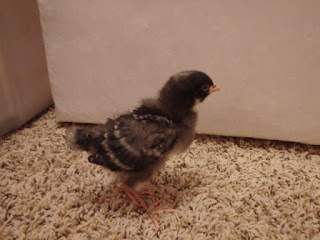The growing season is just getting started and I am surrounded by the many ways there are to add nutrients to the soil. The main nutrients that most people worry about are Nitrogen (N), Phosphorus(P), and Potassium(K). I have learned through studying many gardening and farming books that there are many more nutrients that aid plant growth and development than just those three.
Nutrients can be divided into two main classes: Micro nutrients, and Macro nutrients. Macro nutrients are needed in fairly large quantities to support plant growth. Micro nutrients are needed in tiny quantities, but still play an important role in overall plant health. If you want to find out what nutrients are lacking or overly abundant in your soil then you should have your soil tested. Your local extension service can help you out with this, or there are home kits you can use that give less detailed information.
Most large scale farms generally only worry about the three main macro nutrients N, P, and K. These elements are replaced every year, generally using a synthetic fertilizer. Unfortunately this means that their soils are generally deficient in many of the other nutrients that were used up in previous crops and never replaced. There have been studies done that show that conventionally grown food in this current day and age is less nutritious than food grown 50 years ago due to this depletion of soil nutrients.
There are many other ways to fertilize your soil without just adding synthetic fertilizers. My favorite method is to use compost to enrich the soil. There are a variety of composts that you can buy from the local hardware or garden store, or you can make your own compost if you have the time. In this year's garden I have used different composts in different beds as an experiment of sorts. In two of my beds I added mushroom compost from the store to amend the soil. A third bed included a heavy layer of leaves in addition to the mushroom compost, and was allowed to break down over the winter. The rest of my beds were amended with aged horse manure that I got from a neighbor for free (Free is always the best!) I am looking forward to finding out which composts helped the garden the most.
Another way to fertilize the garden is to do foliar feeding when the garden is growing. This is something that I know far less about and don't really practise in my garden, but some people swear by it and it is worth a mention. There are a variety of things that you can use for this method. Some people use a seaweed mixture, while others may make compost tea, or some other kind of mixture that uses worm castings which are also very rich in nutrients. The main idea is to help the plants absorb the nutrients they need in as many ways as possible. I think plants were better designed to absorb nutrients through their roots than through their leaves, so I haven't used any of these methods. I do have a small worm bin however, and I am going to try to make some worm casting tea to feed my garden this summer. Maybe I will start small in just a few beds to see if it makes a difference in the growth of the plants.
The last thing that I know of that adds nutrients to a garden is mulch. Mulch comes in many forms. You can use grass clippings, straw, wood chips, compost, leaves, or chopped weeds (before they go to seed) to mulch your garden. Mulch serves multiple purposes. It helps retain moisture in the soil because it slows down the evaporation at the soil surface. It also helps to reduce erosion of the soil due to winds or heavy rainfall. Mulch helps deter weeds in a bed if you use a thick enough layer because it blocks sunlight which keeps the weed seeds from germinating. Since many mulches are organic in nature they also add nutrients to the soil slowly over the course of the season as they break down. Mulch does so many positive things for a garden that I can't think of any reason that I wouldn't mulch all the beds in my garden this year.
Fertilizing the garden can be done in a variety of ways. I think the more ways that nutrients are added to the soil the better. Since I want to use as little synthetic materials in my garden as possible, I am focusing on using natural materials to enrich my soil. For compost I used a combination of mushroom compost, leaves and aged horse manure to add nutrients to my garden beds. I will also be using rotten hay and straw to mulch these beds as I plant them. In this dry climate mulch will be very important to keep the moisture levels in my soil as even as possible, since I want to use as little water as possible. I will also be mulching the paths between the beds to help retain additional moisture, and keep the weeds under control on the paths.










































